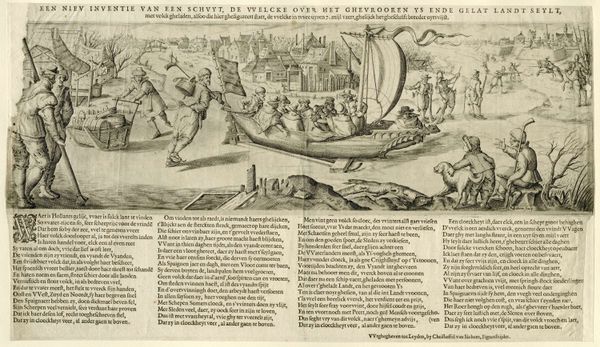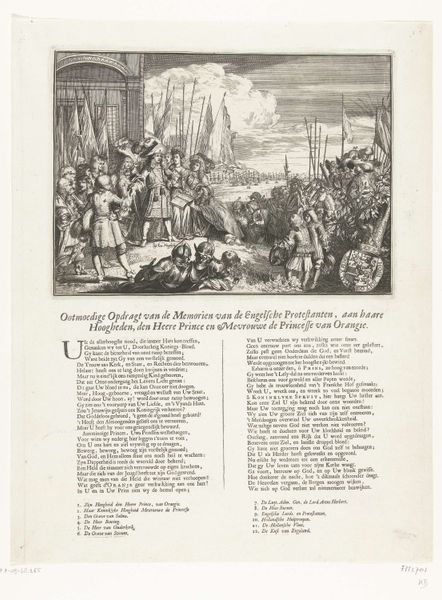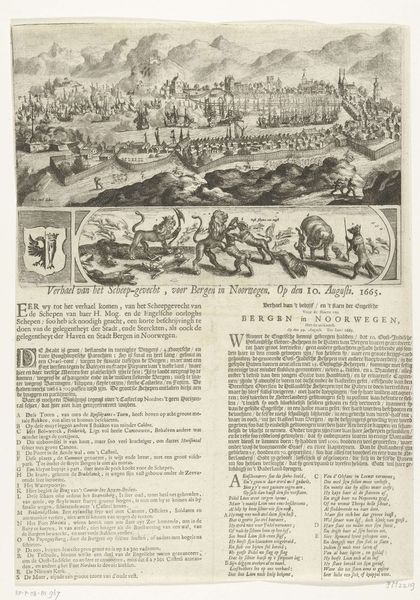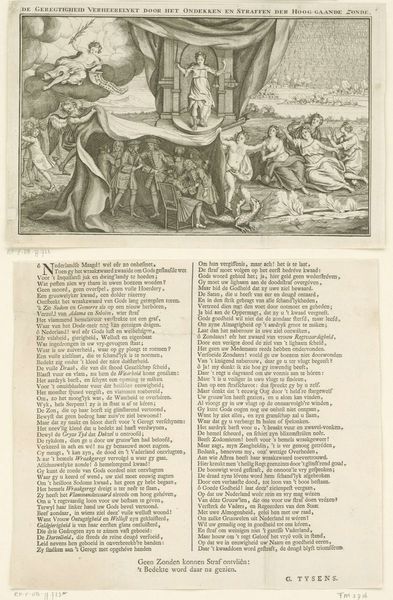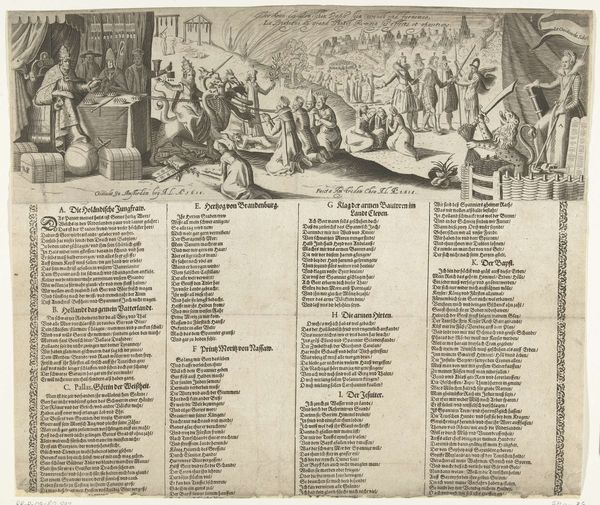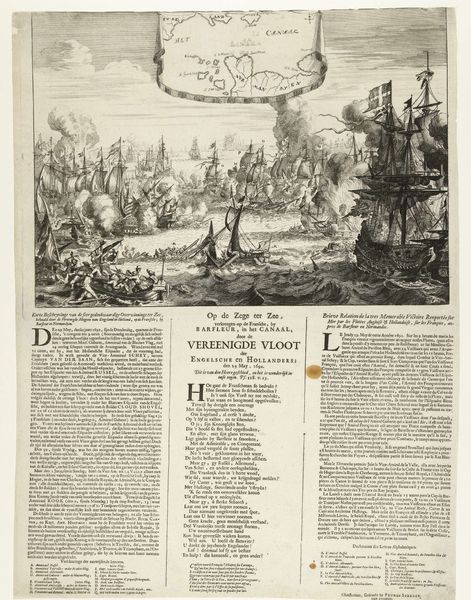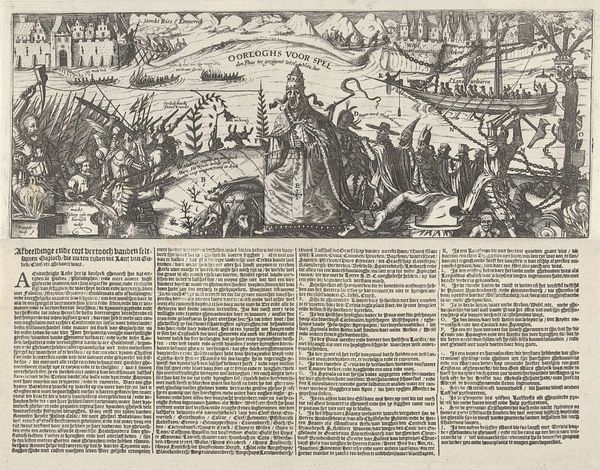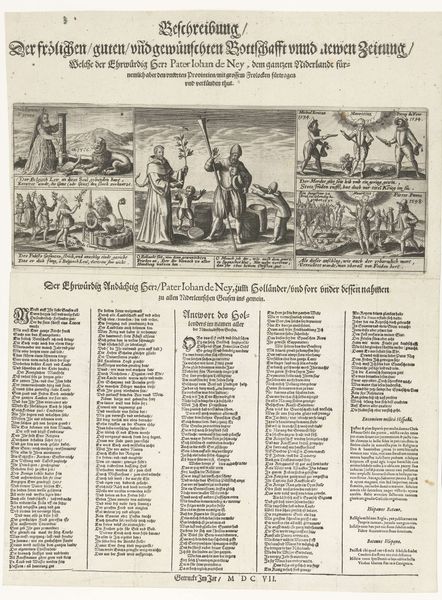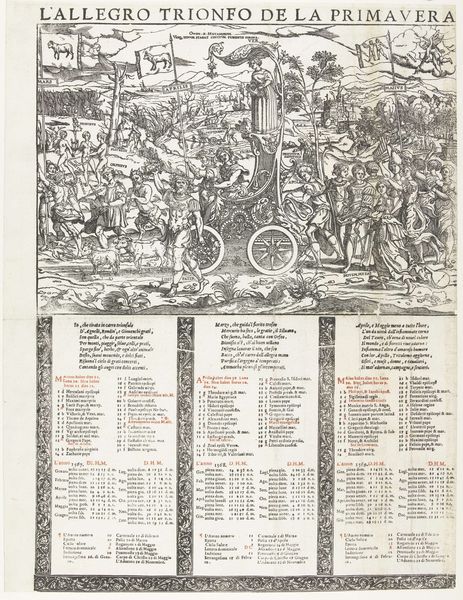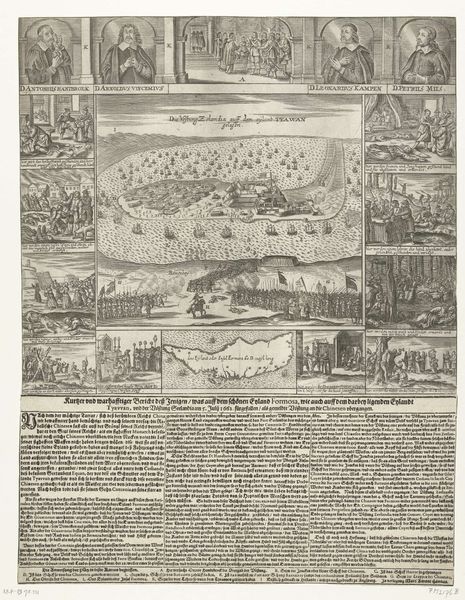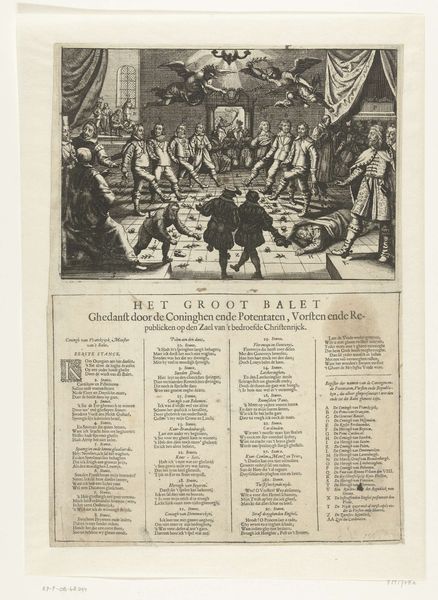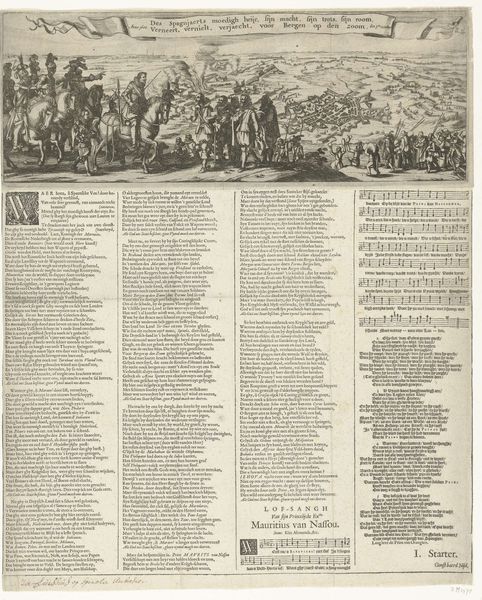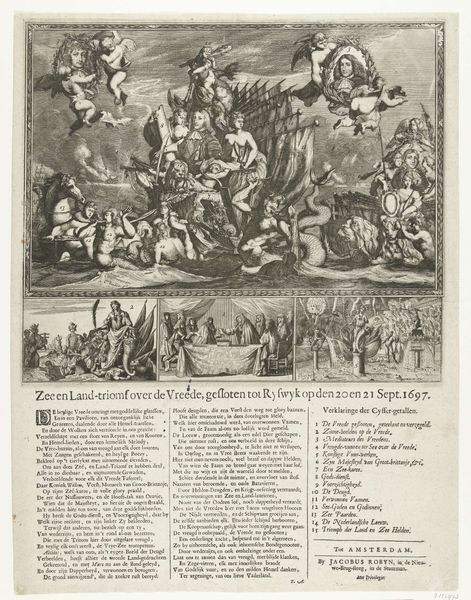
Begin van de expeditie te Antwerpen en ongelukkig eind tijdens de slag op het Slaak, 1631 1631
0:00
0:00
print, engraving
#
narrative-art
#
baroque
# print
#
cityscape
#
history-painting
#
engraving
Dimensions: height 380 mm, width 305 mm
Copyright: Rijks Museum: Open Domain
Curator: My eyes are immediately drawn to the dramatic scenes unfolding in this print. Editor: Indeed. This is a print titled, “Begin van de expeditie te Antwerpen en ongelukkig eind tijdens de slag op het Slaak, 1631”, an engraving created in 1631 by Crispijn van de Passe the Younger. Curator: It’s intensely dynamic. Look at all the tiny figures clashing amidst the chaos of ships and smoke. It feels overwhelming, like a visual shout. What does it all mean? Editor: Well, the inscription gives it away: "The beginning of the expedition in Antwerp and the unfortunate end during the battle on the Slaak, 1631." This commemorates a naval defeat suffered by the Spanish fleet at the hands of the Dutch. Curator: So, it’s war propaganda. I see, with a clear hero and villain then, or a complex reality reduced for impact? Editor: Perhaps. There is this element of celebration of Dutch military might and maritime skill but at the cost of so many lives, reduced here to tiny characters without much individuality. Look at how the architecture sits distantly at the top edge of the composition to demonstrate control. The Dutch naval ships overpower the lower sections. Curator: There's also something about the very medium of print that feels appropriate here. This was designed for mass distribution, like leaflets. But tell me, where does "triumph" fit in if what this is documenting is not triumphant? Editor: That's a crucial point. The Dutch victory, although marking freedom from Spanish dominion, did bring massive devastation. The work may indeed present an ambivalent take on this ‘triumph’. Curator: What strikes me most is the relentless energy—the sheer activity etched into every corner of the plate. It's like a buzzing hive of destruction, beautiful and horrifying. Editor: I’m drawn to the attempt to frame historical narrative through a very particular cultural lens of 17th-century geopolitics. This wasn't just art; it was shaping public sentiment. Curator: Exactly, a permanent mark on paper about impermanent feats of war! Editor: Yes, the very paradox echoes through centuries—how the artist translated reality into the language of symbols and historical interpretation is really quite remarkable.
Comments
No comments
Be the first to comment and join the conversation on the ultimate creative platform.
